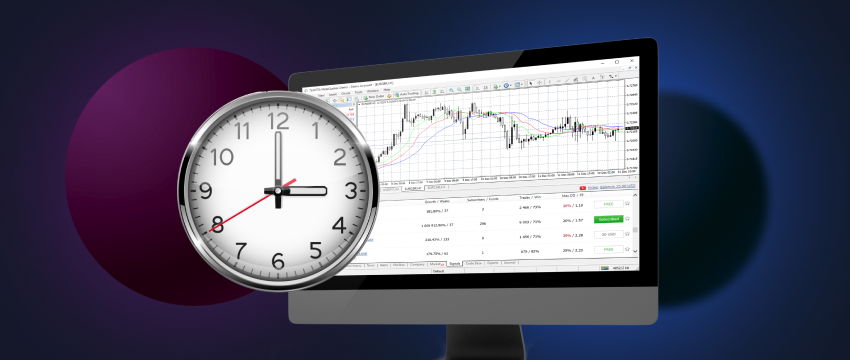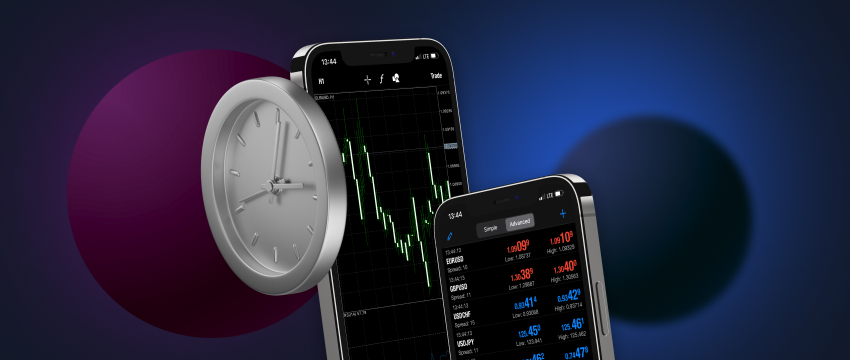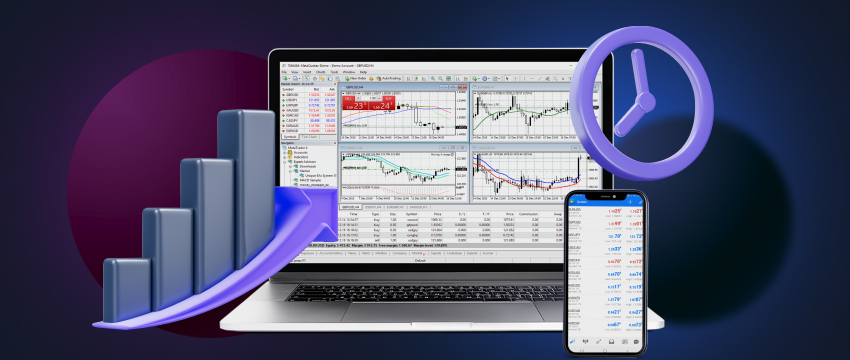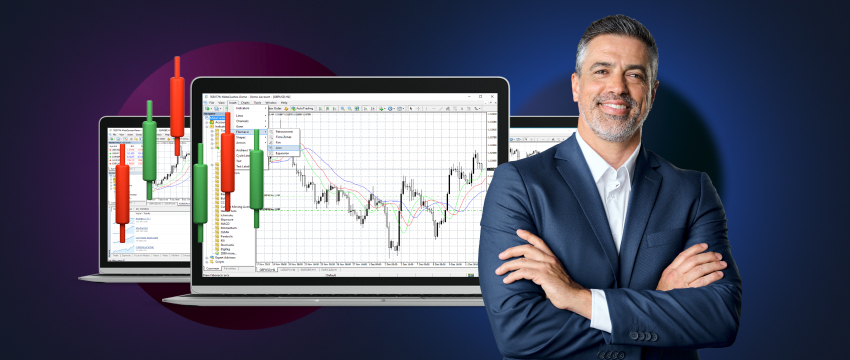Forex trading is tough, and timing is crucial. Understanding when to enter or exit a forex trade is vital for minimising losses.
But how do you make these decisions? How can you determine the best time to open or close a position?
The answer is not quite simple. There are many factors upon which timing depends.
This includes market volatility and the currency pairs you’re focusing on. It also includes your where you are located in the world, your particular trading style and your tolerance for risk.
In this blog, we’ll explore the different trading sessions and how best to leverage what each one offers.

Trade Forex currency pairs explanation
Before jumping into the different trading sessions, let’s first examine the most popular currency pairs and their categories.
The majors
The majors are those currency pairs that include the USD (United States dollar).
The most popular of these on the forex market include the EUR/USD, USD/JPY, GBP/USD, AUD/USD, USD/CAD, USD/CHF, and the NZD/USD. The four most heavily traded pairs are EUR/USD, USD/JPY, GBP/USD, and USD/CHF.
These four pairs are part of the Group of Ten (G10) currency group. This group currently consists of eleven industrialized nations. These nations share similar economic interests. The EUR/USD is regarded as the world’s most liquid currency pair. After that is the USD/JPY.
The minors
Minor currency pairs are those that don’t include the USD. Examples include the GBP/JPY, EUR/CHF, EUR/GBP, EUR/AUD, GBP/CAD, and NZD/JPY. While they are not traded as frequently as the majors, the minors (also known as the crosses) are still quite liquid. They also offer trading opportunities.
The Exotics
Exotic currency pairs include currencies from emerging markets. The pairs come with far wider spreads and offer far less liquidity than the majors and the minors.
Examples of these pairs include EUR/TRY (Euro/Turkish Lira), USD/ZAR (US Dollar/South African Rand), and EUR/MXN (Euro/Mexican Peso). Other examples are USD/HUF (US Dollar/Hungarian Forint), TRY/JPY (Turkish Lira/Japanese Yen), and GBP/PLN (British Pound/Polish Zloty), among others.
Currencies trade in pairs on the forex market through products like CFDs (Contracts for Difference). CFDs are agreements between brokers and traders. They allow traders to speculate on the price movements of the underlying asset. In this case, the underlying asset is a currency pair.

The 24-hour forex market
The decentralized forex market operates 24/5, closing only on weekends. The market is divided into four main sessions: the Sydney session, the Tokyo session, the London session, and the New York session.
The global trading day begins with the Sydney market, which operates from 7:00 AM to 4:00 PM local time (4:00 PM to 1:00 AM EST). The Tokyo session follows, running from 9:00 AM to 6:00 PM local time (7:00 PM to 4:00 AM EST).
The London session runs from 8:00 AM to 5:00 PM local time. This is equivalent to 2:00 AM to 11:00 AM EST. Finally, the New York market opens at 8:00 AM and closes at 5:00 PM local time. In EST, this is also from 8:00 AM to 5:00 PM.
Categorisation of trading sessions by geography
Each trading session effectively represents the trading activity occurring in different regions across the globe.
These four sessions group into three key regions: the Asian session (including the Tokyo and Sydney markets), the European session (London market), and the North American session (New York market).
1. Asian session
At the start of the week, when liquidity returns to the forex market, Asian markets are the first to become active, with trading primarily centered around Toyko from midnight to 9 am (GMT).
Other countries do also participate during this period such as China, New Zealand, Australia, Hong Kong, Singapore, Russia, and Malaysia.
The overlap between the Tokyo and Sydney sessions is less volatile than the overlap between London and the U.S., but it still offers significant trading opportunities.
During this period, the EUR/JPY is one of the most popular forex pairs, as these two currencies are typically the most affected by market movements.
The overlap between Asian and European sessions does sometimes lead to increased volatility due to a rise in trading activity during that time period.
2. European session
The European session picks up momentum in the currency market as the Asian trading hours start winding down. The session includes several major financial centers, such as Germany and France. However, London playing a key role in shaping it the European session.
In fact, reports indicate that nearly half of the $7.5 trillion in daily forex transactions occur in London, solidifying its position as the world’s leading forex hub.
Further numbers indicate that the UK’s market turnover reached almost $3 trillion in October 2023, reflecting a 3$ YoY increase, despite the challenges posed by Brexit.
3. North American session
The New York session overlaps with the London session, creating a period of peak market activity. By the time it comes online, the trading day is already halfway through for European traders.
As the last major session of the day, US traders dominate it. Economic data releases, earnings reports, and geopolitical uncertainties heavily impact currency prices during this period.
The New York session is also vital for USD trading pairs since the dollar is involved in almost 90% of all forex transactions.
Pick what session to trade in forex
Correct trading strategy
Choosing a session to trade in is dependent on several factors. For one, your trading strategy plays a pivotal role in establishing the trading hours that best align with it.
A scalper for instance seeks quick, short-term trades.
This type of trader may find the overlapping periods of the London and New York sessions more appealing due to high liquidity and volatility.
A position trader may look to trade during quieter periods, such as the Sydney session, to avoid being stopped out by sudden market swings.
Pick of currency pair
Your pick of currency pairs will also influence your preferred trading times. The majors for example display the most activity during the London and New York sessions.
For those traders looking to trade pairs that include the Australian or New Zealand dollar, the Sydney session may offer more trading opportunities.
Best time to trade
Another factor impacting what time you should trade is your personal day to day routine. If you’re employed in Europe and keep to 9-5 working hours, you may be forced to trade in an session that is active in the evening, when you have the time to engage, e.g. New York.
The risk tolerance of trading
Your tolerance for risk is also a consideration when picking a trading session as each session offers varying levels of volatility, liquidity, and market behaviour.
For someone who prefers more stable and predictable market conditions, picking a session that is is known for the highest volatility and liquidity may not be the ideal option.
The same can’t be said for someone with a higher risk tolerance who is willing to face the challenge of rapid and large market swings.

Trading with T4Trade
T4Trade is a popular broker among traders worldwide. It strives to offer an excellent trading experience. The forex broker provides access to one of the world’s most popular trading platforms, MetaTrader 4.
It also offers extensive educational resources and tools, including a useful Economic Calendar to monitor key financial releases.
Additionally, T4Trade provides a range of account types, competitive spreads, quick executions, and easy deposits and withdrawals. Also available is a 24/5 multilingual customer support team that’s on hand to assist with any queries a trader might have.
Disclaimer: This material is for general informational and educational purposes only and should not be considered investment advice or an investment recommendation. T4Trade is not responsible for any data provided by third parties referenced or hyperlinked in this communication.




